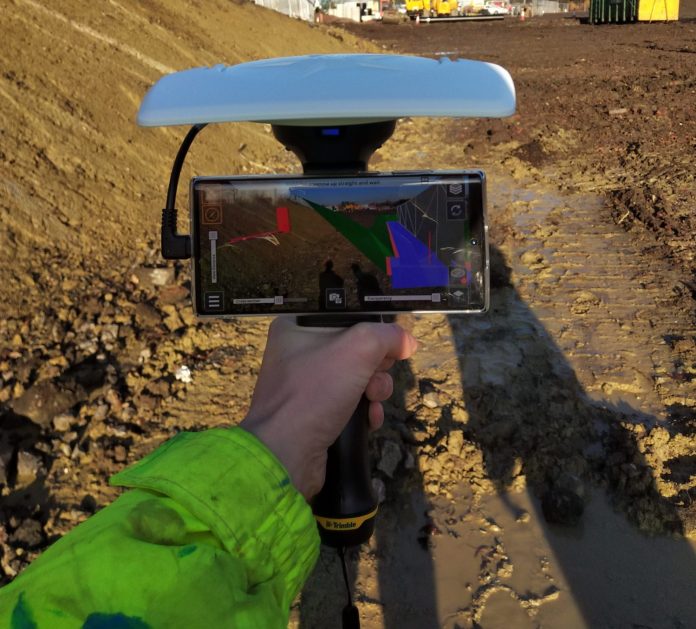The use of AI in construction is set to revolutionise the industry, but it won’t be taking over your job, says Anthony Watson, pre-construction manager at O’Brien Contractors
Since its inception, the use of artificial intelligence (AI) in construction has significantly improved the industry in many ways, including increased cost-effectiveness, efficiency, accuracy, and safety in various aspects of construction projects.
Through data analytics and machine learning algorithms, Al has enabled better decision-making, streamlined project management and improved resource allocation, enabling better project planning, automated repetitive tasks and improved risk management by identifying potential safety hazards.
However, as the technology advances and disrupts the industry, contractors are concerned about algorithmic biases and job displacement.
Al has been used in construction in a variety of ways, such as predictive analytics for risk management and project scheduling, Building Information Modelling (BIM) optimisation for design and planning, autonomous and semi-autonomous vehicles, drones for site surveying and monitoring and robotics for excavation, welding and bricklaying.
Predictive analytics combined with predictive maintenance of equipment and infrastructure has also been used to manage human and material resources to successfully build and maintain a variety of assets from roads, power stations and water treatment plants.
Inspecting the Elizabeth Line with AI
Several major construction projects worldwide have successfully integrated Al technologies. The Elizabeth Line in London, often known as Crossrail, is a prime example of this, with drones powered by Al being used for surveying operations.
The building of a new railway line connecting east and west London, with a core part travelling beneath the city, took more than 30 years to complete and now transports over 4.3m passengers per week, making it the busiest railway in Great Britain.
Traditional surveying methods often involve manual measurement and data collection, which can be time-consuming and labour-intensive.
AI-powered drones offer a more efficient alternative by autonomously flying over the construction site and capturing high-resolution imagery and LiDAR data.
During the Crossrail project, a drone (UAV) system was developed to inspect and produce virtual models of tunnels and other indoor scenarios.
This considerably reduced the on-site (underground) working time and obtained a massive amount of information in a fraction of the time that using traditional data acquisition techniques would involve.
Drones utilising Al technology are already widely employed by construction firms across the country for site inspections, providing real-time data and imagery that can improve the accuracy of project planning and progress tracking.
To get the most out of the technology, many are also investigating the application of Al in pre-construction operations, specifically in the domains of knowledge management, project planning and risk management.
Starting small, with huge potential
When integrating AI into a construction company, it may be useful to start small despite its apparent potential in large-scale projects.
This can mean focusing on specific use cases and implementing solutions in a scalable way to accommodate future growth or introducing accessible forms of AI such as ChatGPT.
Starting small also allows users to assess the value of AI solutions within a company, gather expertise and make necessary improvements before scaling up.
Al has already made significant strides, but its potential for future impact is vast. For example, Al will substantially influence the planning and design stages of construction by helping to create more efficient and sustainable designs by analysing extensive amounts of data and identifying optimal solutions that might not be apparent to human designers.
With the industry pushing for net zero, AI is also likely to have a profound effect on sustainability and resource management through optimising material usage, energy consumption and waste reduction, and thus contributing to more environmentally friendly construction practices.
Focus on collaboration and innovation
Despite the perception of construction as a domain of manual labour, Al has the potential to promote and strengthen stakeholder collaboration.
By automating repetitive tasks and providing real-time data insights, freeing up time for professionals to focus on innovation, AI encourages collaborative decision-making. It can also facilitate better communication and coordination among team members.
For contractors to embrace emerging technologies like AI, cross-industry and sector collaboration is equally essential.
By sharing knowledge and best practice, contractors can accelerate the adoption and development of AI solutions tailored to the specific needs of the construction industry.
Pooling expertise also facilitates the integration of AI with other emerging technologies, leading to more holistic and effective solutions for construction challenges, such as rising costs and maintaining safety while prioritising efficiency.
Like any change impacting the industry, AI requires support from the top-down to the bottom-up. In order to make investments, everyone within the company must understand the benefits and uses of the technology.
Additionally, it’s important to make use of networking opportunities and online information platforms.
Online resources geared towards construction professionals are essential for staying ahead of emerging technologies and how they can be applied to boost project productivity, improve design capabilities and promote innovation in the industry.
Businesses should also share their project roadmaps, including achievements and obstacles, with peers so they can progress and refine strategies within their projects.
Empowered by AI, not overpowered
The future of Al in construction is promising but there are always pitfalls to be aware of.
Despite the technology being set to transform the way projects are planned, designed, tendered and executed, risks such as data security and the need for significant investment in technology and training must be carefully considered.
Ensuring that Al is used by relevant regulations and ethical guidelines is also crucial.
Most importantly, its key to embrace AI as an aid for humans enabling job efficiency, rather than job replacement. In decision-making processes, algorithms should never take the lead; rather, they should empower users to make better decisions.
Anthony Watson
Pre-construction manager
O’Brien Contractors
Tel: +44 (0)1926 423 918
info@obriencontractors.co.uk
www.obriencontractors.co.uk
X
LinkedIn
Facebook
YouTube














